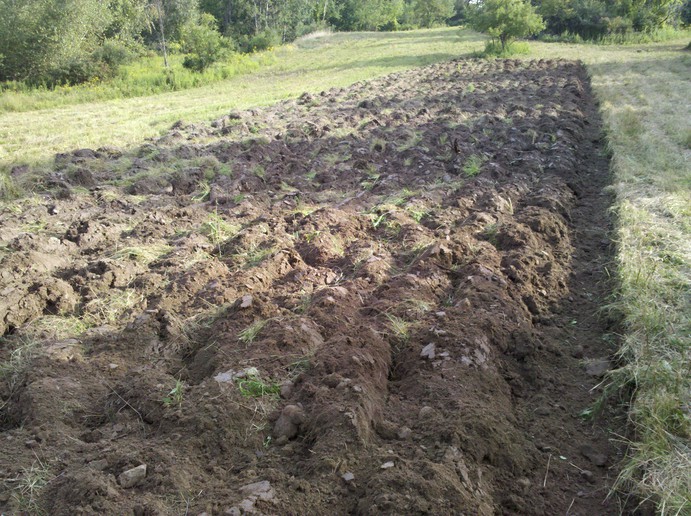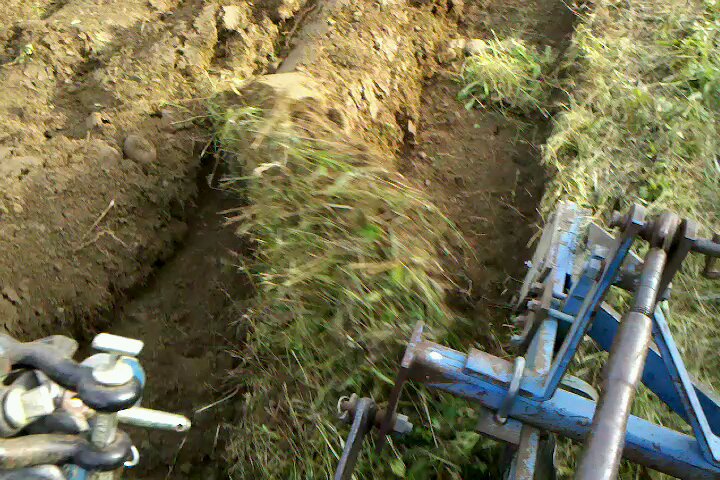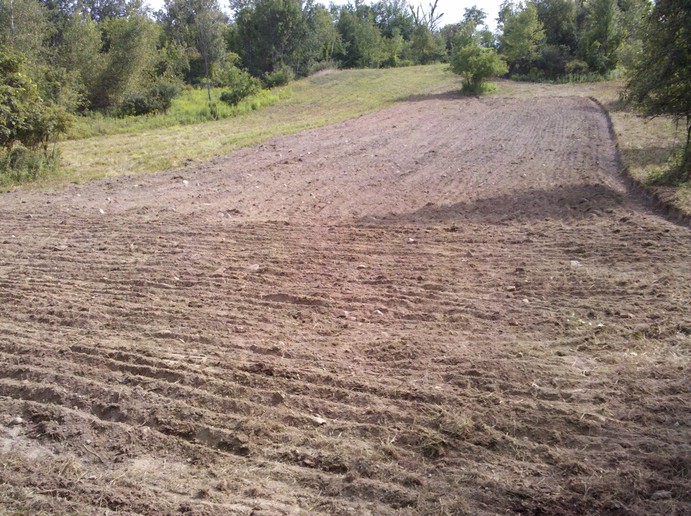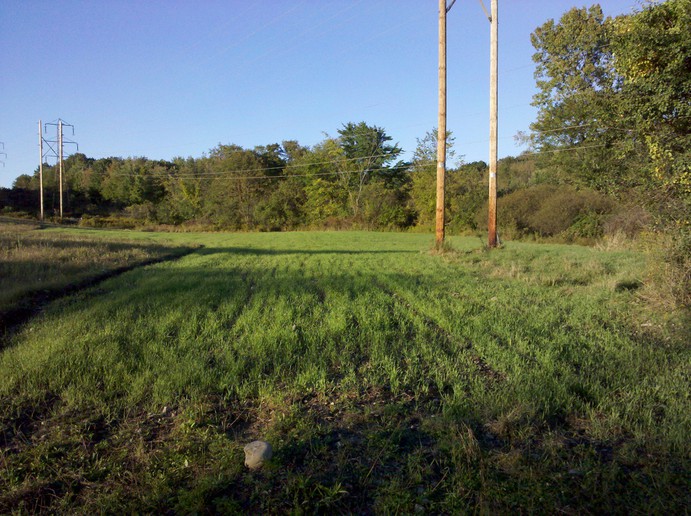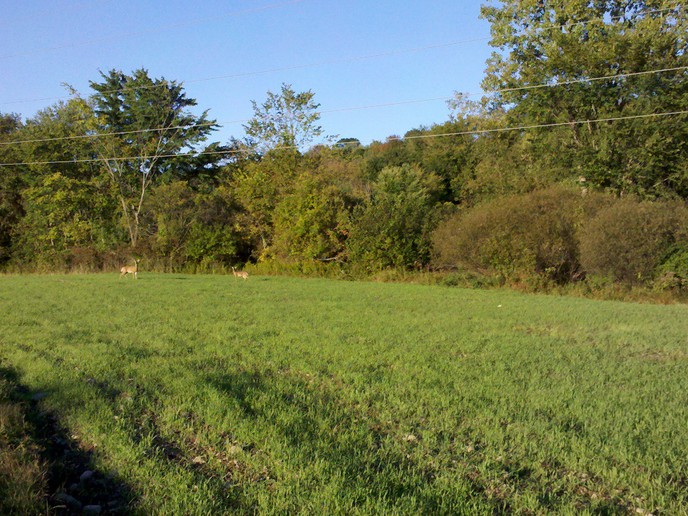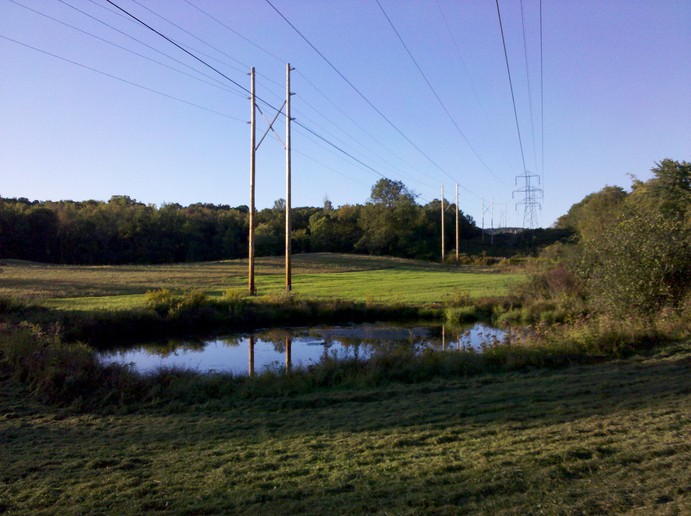I've done the opposite of what has been mentioned here, so I'll share those experiences, no spraying,(well very little if needed) not using no till etc. with good results in ground that has not been worked in over 20 years.
I'd be curious to know if the ground is sloped or flat.
I would agree with erosion concerns, maintaining what you have which could be some nice topsoil is something to consider and use care with how you do things.
If its 8" deep, before you get to subsoils that is plenty, as if you plow, you don't want to turn up clay or whats under the top soil. There are valid reasons, per what has been mentioned previously, but in my opinion, these tillage practices, for food plots, are still viable, and work very well for example where I use them in the soils I have here.
Some concerns with these methods are erosion, by water or wind, creating a hardpan layer, compaction from tractor tires etc. I am not sure what soils hardpan is prevalent with, or compaction, probably many types in varying degrees.
Being a novice at moldboard plowing is not the end of the world. However, doing a poor job with a moldboard plow will make a mess, and it won't make the best seed bed depending on what you are doing, you can have half turned sod, with weeds/vegetation you don't want turned up that will recover in a short time, so what you plant will have scattered pockets of weeds etc. There is also a concern with some weeds and plowing, turning in dormant seed, something I am aware of but have not encountered here.
So for my plots which were all just planted this year, and have not been in years, I mold board plow the sod under, after mowing. For me, the single bottom I have a Ford 110, shear bolt protected general purpose plow 1-16" I believe, does the best job, on this tractor in those conditions. I have a 2 bottom 101 Ford, but have not mastered its use in root bound, sod conditions, it may be an adjustment I have not been able to achieve, center of draft, or similar, both mind you have been rebuilt with new wear parts except moldboards. I can set the single bottom level front to back, side to side, very easily now as I chocked up the land side of the tractor, right wheel to the plow depth of about 8", then level it with the level box on the right lift arm and top link, test in the field, then measure the distance on each linkage, threads showing to a known point, wrote it down, then set to that each time I hook onto that plow, it has worked quite well for me. Mind you I was a novice 10 years ago, and still consider myself a novice now with the only difference being, I know the results I want to get with the plow and can achieve same with what I think are good results.
My plots are on varying terrain, slight to medium slopes and flat, they are also not very big, well one is considerably larger but its on the flat.
The steepest slope which is plowed and disc'd parallel to the slope has no erosion issues at all, even if it did, its not very big, I could push any soil washed down back in place, there is a sod or root bound buffer surrounding it, and the soils on the bottom appear to be thicker from probable erosion years ago, as it was in crops for many many years, now its wooded, and I have cleared parts of it back. The other reason is I plant it thick with oats, and oats mixed with other forage plants. It germinates and roots up aggressively, with the intense rains we just got, running water flattened a small swath on one side, no erosion, well there is a little luck with that, as there were gentle rains before to get it to germinate and grow, so there is a window where it can happen, but narrow, and this is not a large area to begin with.
I mostly plant oats or oats mixed with other forage, such as TSC's Plot Spike or Whitetail Institute No Plow, which is the best deal they offer, as you get the most coverage, its a no till seed, but aggressive, put that in a seedbed and it does very well, PH, fertility is important for good results but even with lightly tilled, say just on the surface it does very well. I moldboard plow, then disc one pass, I use my bucket on the loader to screed the top if its not level, can push rocks or any clumps of sod off, to the side, which there are not many if plowed right then broadacast oats on top, heavily, a lot more than a grain crop, then I make one pass with the disc, overseed with No Plow. Now you can use less oats, give the No Plow room to grow, in that case I just broadcast less oats. I've done both, and with the right population of oats, the no plow fills in what would be a much thinner stand of oat grass. With a thicker stand of oat grass, I think the oats dominate, so there is an optimum mix of the 2. I go over the oat grass once its up, in the thinner areas, with no plow, to fill in. You can do the same with a clover or other whitetail institute perennials to achieve a stand as the oats will choke out weeds, the other forage will fill in, and to be honest on a small plot properly tilled, you could hand spray as needed to eliminate weeds, I do see thistle and a few other weeds come up, but mostly these small stands of forage do come out very clean, timing is important if you want to knock those weeds down that do come up.
With this latest planting, I have thick stands of forage, annuals, next spring, I could go in with a disc, cultivator,spring tooth harrow lime, fertilize as needed, plant oats, cultipack, then plant a perennial, like Imperial Clover as an over seed, oats being the nurse crop, monitor it for emerging weeds and spray as needed, though I am not sure if there is a conflict with broad leaf and grasses, as far was what you can spray. I've done stands of clover and the weeds were minimal so when the time comes, you are supposed to mow that clover, I believe at least one times, whatever weeds I had did not go to seed, and you could hand spray them, not enough to justify going over entire plot.
Some photos, prepping the seed beds, you can see what decent plowing results look like. My plow did plug up with trash, have to get off the tractor, clear the trash, I did trip the plow and shear bolts on some roots and shale in one area, as well as remove and put back on the coulter, par for the course, mowing keeps live plants from being on the surface, but leaves trash, even with a rolling coulter, you can plug up, I've not found a way around it. Without mowing, this time of year, plants are still live but tough, coulter does not seem to cut them, so if I leave it standing, not all gets turned under, so I cut these areas and deal with plugging at times, but I get the best results between the 2, and I believe the live green plants going under is some nitrogen, my stands are a healthy green now. Some weeds, if you leave roots in the soil or disturb dormant seed, can apparently make noxious weeds come back with a vengeance, just that I have not seen it here, yet, and its all weeds the ground I did plant, late summer planting has benefits and I do see much cleaner soils in the spring, getting ahead of the weeds, whereas along side it where the soil is loaded with weeds, they are more prolific, come back much sooner. I find planting food plots is a lot of fun because you will learn an awful lot, but if things go wrong, its not acres and acres, its large garden size areas, you can deal with it, make corrections. Do this with ag land for crops, well thats a different story, and could waste a lot of money. I've always gotten a decent forage stand, even when I was just starting to do these plots.
In the photos, you can see the tillage, seed beds and oat grass, as of yesterday. No fertilizer, did not check PH, add lime, just could not afford, it but planted anyway, better than nothing, its all mostly oat grass, but there is No Plow in this plot overseeded on top, after the oats germinated, timely rains made a nice forage, ungrazed it would be 8-10" already, more if the PH was right and fertilizer put in. Nothing special, but shows with minimal effort, and using inexpensive oat grass, late summer, is a nice way to give em some nice healthy forage in an area with no grasses, so they browse the usual plants, tree branches, but also get a nice dose of grass when they want, they will benefit from this well into winter, it does help keep em fat, as I have taken deer here when there were 70 acres of oats in the vicinity, they forage heavily on what comes back after harvest.


